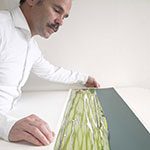Villa Biagio Saraceno. Portrait Drawing session. July 2024
This July 15 of us travelled to Italy to stay at Villa Biagio Saraceno. a historic renaissance farmhouse by architect Andrea Palladio.
With the spirit of the Renaissance and in the main hall I organised on the 9th of July a get together to look at the fantastic frescos in the Main Hall. We sat on cushions on the floor pairing artists and models to draw each other from up close.
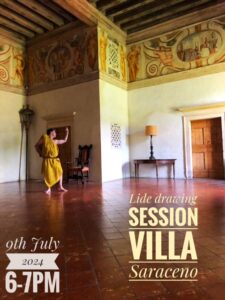

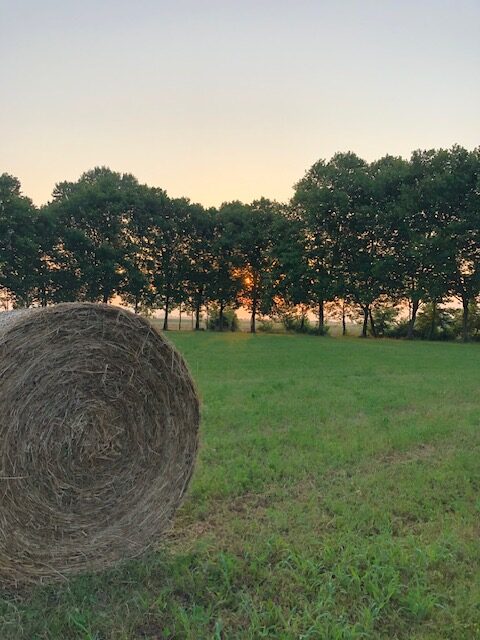
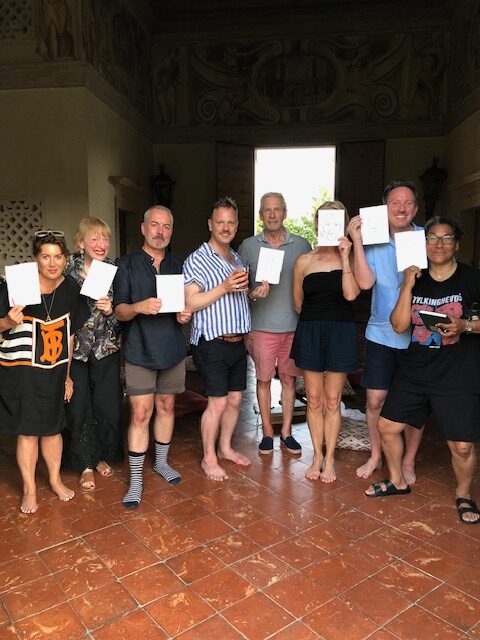
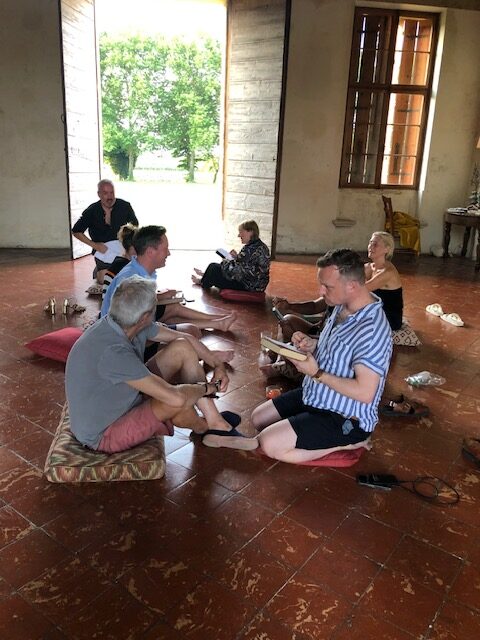
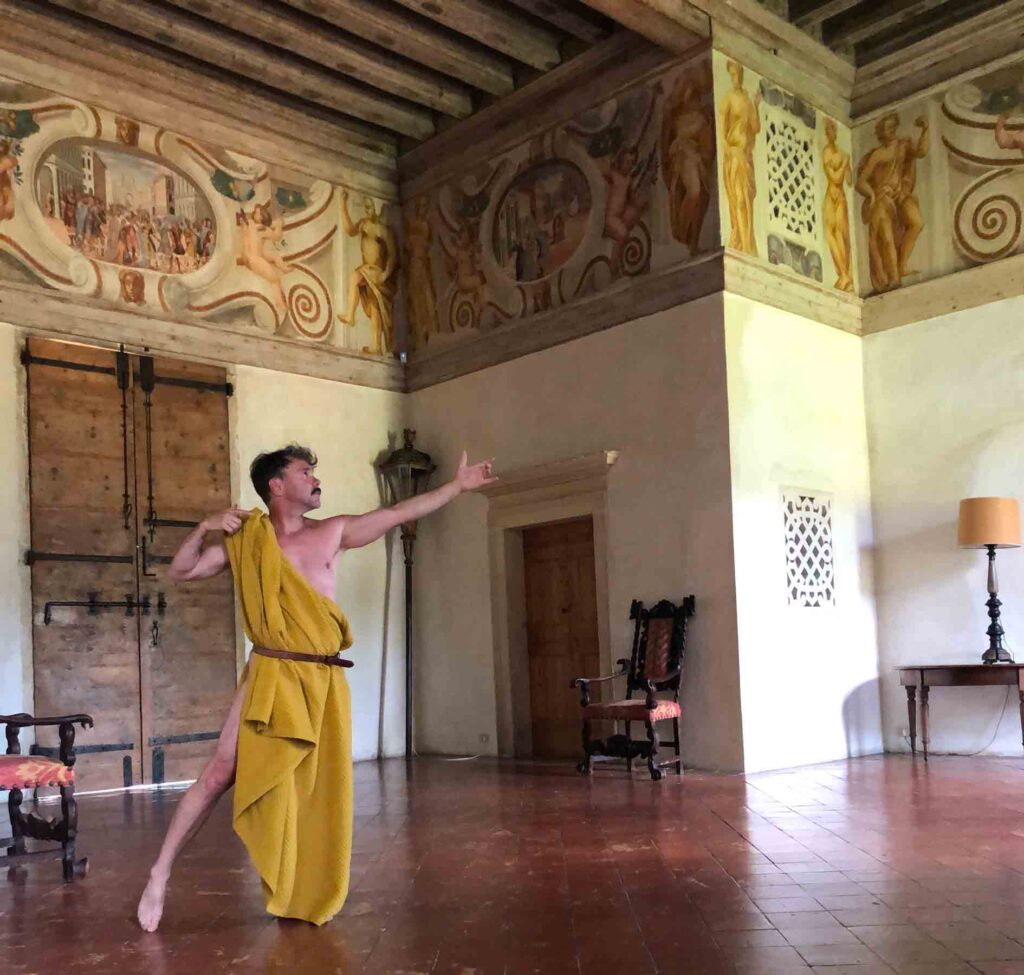
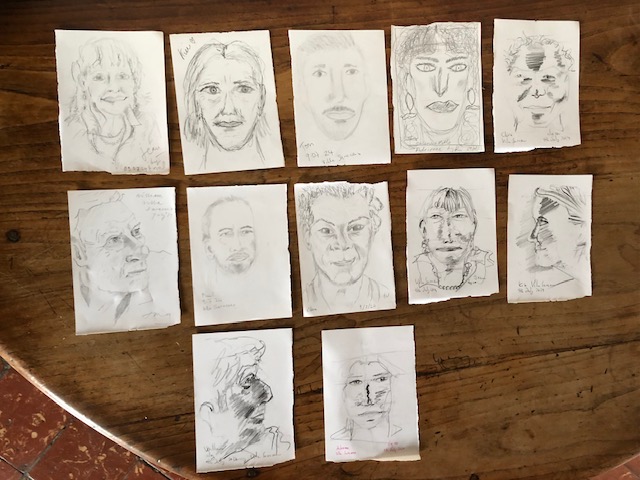
Main Hall Frescos
The wall paintings in the main hall show the tragedy “Orazia” (1546) by Pietro Aretino (1492-1556), a lively writer from mid-16th-century Italy. The series starts above the back door. A lord sits writing at a desk in a room that looks like the main hall of this villa. A letter from Aretino to Lucietta Chiericati Saraceno in 1552 suggests that the lord is Aretino himself, writing “Orazia” in the main hall of Villa Saraceno. The story begins through an open door. Orazio, having defeated the Curiazi tribe, rides towards the Roman army near Rome, while the Alban army waits on the other side. The tale of how Orazio kills his sister Celia unfolds counterclockwise from the left of the entrance from the loggia:
- The old nurse brings news that Celia’s Curiazio husband has been killed by Orazio and shows her the golden collar as proof.
- In a Roman street (though shown with Renaissance buildings), Celia mourns her husband’s death to her father, Publio. Her brother Orazio, angered by her disloyalty, is held back by friends on the right. On the left, Marco Valerio, a Roman official, seeks a response from a high judge.
- Celia, still with her nurse, is taken by her father before the judge, flanked by Roman officials.
- (Already described above).
- The Roman people follow Celia and her nurse, while Orazio talks to Spurio, a friend of his father. The buildings and crowd lead up to a triumphal arch with the letters S P Q R, the motto of the Roman Empire.
- Publio asks for the sentence from one of the duumviri, who sits on a throne between lictors with fasces. On his left are Orazio, Celia, and her nurse.
- The peak of the tragedy: Celia is stabbed by her brother. The nurse screams, covering her eyes. A butcher’s shop stands symbolically behind the victim.
- Celia’s bloody body is carried away by her loyal, heartbroken nurse. On the right, Orazio, the sister-killer, closes the scene saying, ‘This is the fate of one who dares to mourn the death of our enemies.’ (third act).
(Source Landmark Trust)
To mark this occasion I created this set of small prints.
-
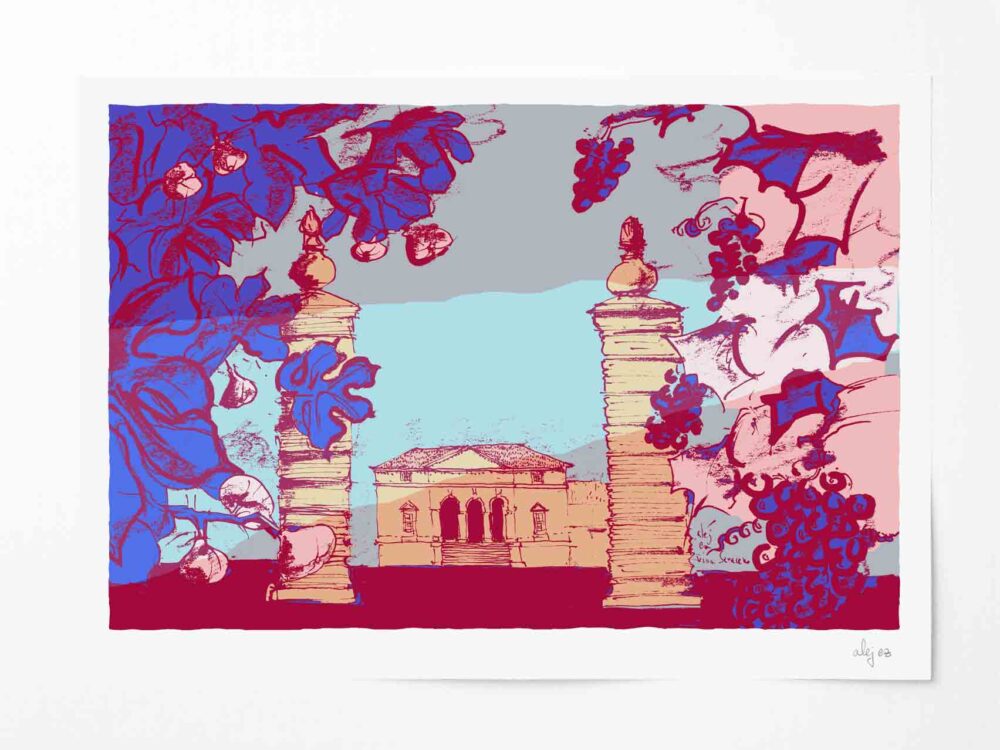 Grapevines and Fig Trees Villa Biagio Saraceno Andrea PalladioPrice range: £40.00 through £54.00
Grapevines and Fig Trees Villa Biagio Saraceno Andrea PalladioPrice range: £40.00 through £54.00 -
 Renaissance Farmhouse Villa Biagio Saraceno Andrea PalladioPrice range: £40.00 through £54.00
Renaissance Farmhouse Villa Biagio Saraceno Andrea PalladioPrice range: £40.00 through £54.00 -
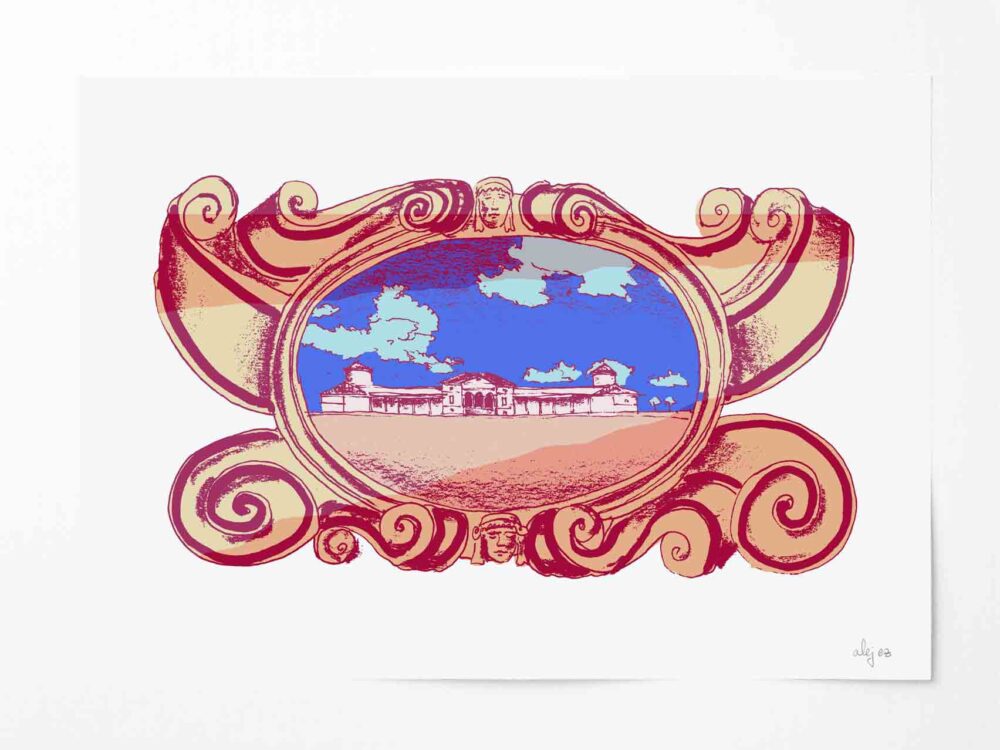 Renaissance Cartouche Villa Biagio Saraceno Andrea PalladioPrice range: £40.00 through £54.00
Renaissance Cartouche Villa Biagio Saraceno Andrea PalladioPrice range: £40.00 through £54.00
Villa Biagio Saraceno
Villa Saraceno, own and run by The Landmark Trust, has long been a haven for those seeking a break, just a short trip from the lively cities of Padua, Vicenza, or Venice. Today, you can find the same peace here. The villa was built for Biagio Saraceno, a lesser noble from Vicenza. During the calm years of the mid-sixteenth century, Italian nobles and merchants sought escapes from city life, much like we do today.
Andrea Palladio designed this villa for a quiet yet cultured rural life. Villa Saraceno is a prime example of his designs; it has a perfectly symmetrical plan, a grand portico, and spacious rooms. The fertile plains of the Veneto are dotted with classic Palladian villas like Villa Saraceno. While you can visit some of these villas, none offer the exclusive experience of enjoying a life of complete relaxation like ours does.
Just as the Renaissance nobles for whom these villas were built, you can easily enjoy urban sophistication when you wish. Our villa is just over an hour from Venice, and the towns of Padua and Vicenza are even closer, each brimming with architectural and modern-day wonders to explore.
During restoration, we were delighted to find lively frescoed friezes under later layers of limewash. These friezes run around the cornices of the high main hall, loggia, and sitting room, which also has an open hearth for log fires on cooler evenings.
